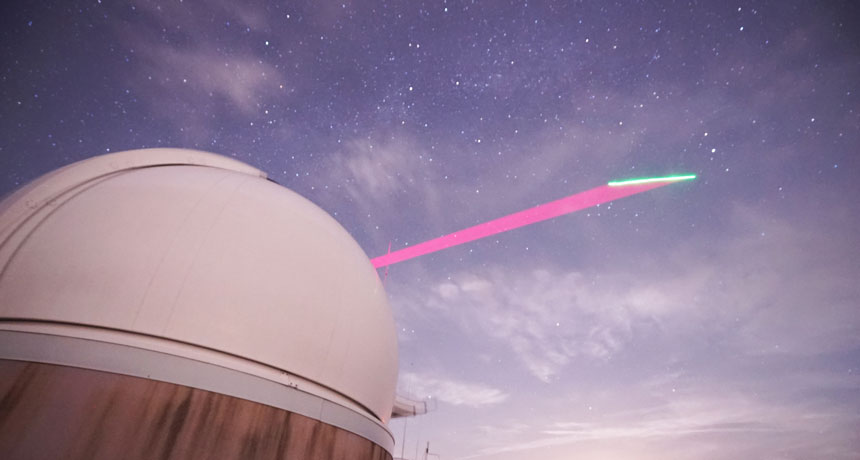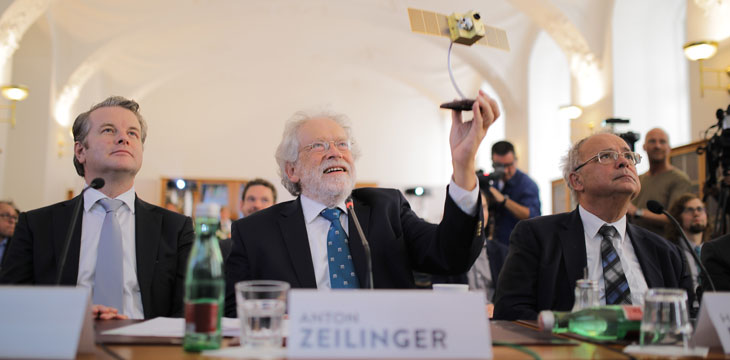Quantum video chat links scientists on two different continents
Demo of ultrasecure internet connection is a step toward global quantum communications

SECRET CODE A telescope in Graz, Austria, received particles of light beamed down to Earth from the Chinese satellite Micius. Those photons encode a quantum encryption key used in a secure quantum videoconference. A laser on the telescope tracks the satellite’s location in the sky.
© Johannes Handsteiner/ÖAW








